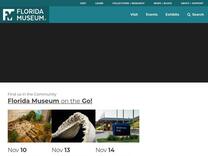Rare, Beautiful & Fascinating: 100 Years @FloridaMuseum – Pressroom https://www.floridamuseum.ufl.edu/pressroom/media-resources/100-years/
Rare, Beautiful & Fascinating: 100 Years @FloridaMuseum Sept. 23, 2017-Jan. 7, 2018 Press Release Major Themes and Components Did You Know? Photo Captions Exhibit Page FREE ADMISSION From rare, ancient treasures to cutting-edge technologies, the exhibit showcases the Museum’s 17 co
Objects from the Museum’s 40 million specimens also reveal the stories of everything

